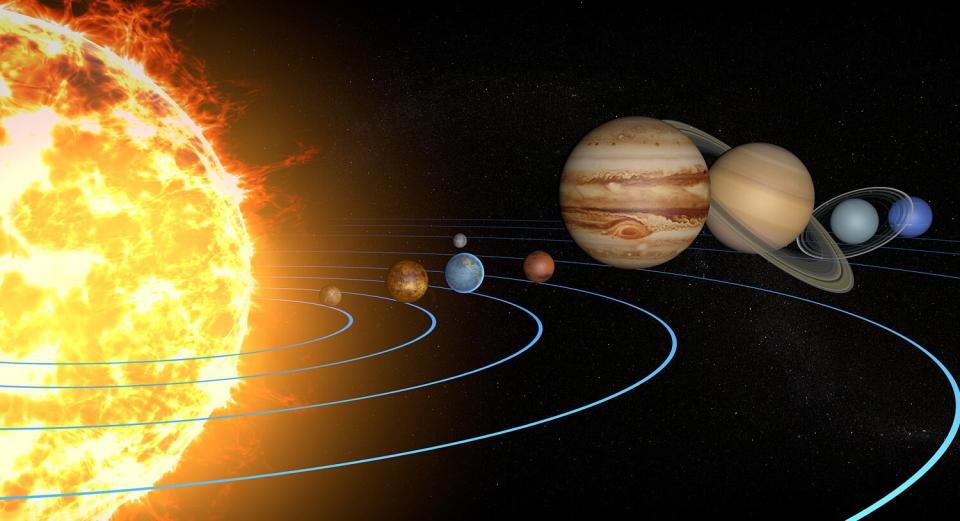5 Planets Will Align in Rare Event That Won't Happen Again Until 2040 — Here's How to See It

NASA/JPL-Caltech
This is one sight that's worth waking up early for.
Throughout the month of June, five planets — Mercury, Venus, Mars, Jupiter and Saturn — have been visible to the naked eye shortly before sunrise. The rare sight is even more remarkable because the planets are all lined up in their natural order from the sun.
"The last time the five naked-eye planets were strung across the horizon in sequence was in December 2004," Sky & Telescope said.
However, on Friday morning, an extra special treat will be visible in the dawn sky because a waning crescent moon will be positioned between Venus and Mars. Additionally, Mercury, which has been getting brighter all month, will be easier than ever to see.
If seeing five planets lined up is rare, having the moon thrown in is taking things to the next level.
For more on the planets aligning, listen below to our daily podcast PEOPLE Every Day.
"The last time this happened was in the mid-1800s," Dr. Jackie Faherty of the American Museum of Natural History told CBS New York. "To get the moon in there in this good alignment position that it's in, that's the part that makes this an-extra-cherry-on-top special."
RELATED: Everything to Know About June's Strawberry Moon, Including How to See It
If you live in a big city, you still should be able to see the planets, experts say.
"Even in the city, these are bright enough — you should be able to see," Michelle Thaller, an astronomer at NASA, told The Washington Post. "Go up on a friend's balcony or on the rooftop. As long as you can get a nice clear horizon and clear skies, you can see it."
As for timing, Mike Shanahan, Planetarium Director at Liberty Science Center, warned that you'll need to wake up early.

Getty
Depending on the weather, Shanahan told CBS New York that the ideal time slot is generally between 4:40 a.m. to 4:50 a.m.
Sky watchers will have a little more leeway on Friday, as the "five planet parade" will be visible for about an hour until Mercury gets washed out by the rising sun, according to Sky & Telescope.
Never miss a story — sign up for PEOPLE's free daily newsletter to stay up-to-date on the best of what PEOPLE has to offer, from juicy celebrity news to compelling human interest stories.
If you miss out on Friday's celestial show, don't worry — all five planets will still be visible through July 4, according to CBS New York.
But after that, you'll have to wait a long time to see five planets together, as the rare conjunction won't be seen again until 2040.
RELATED: Total Lunar Eclipse 2022: See All of the Super Flower Blood Moon Photos from Around the World
Of course, taking in the views is one thing — but capturing it on film is another.
Amateur astrophotographer Alexander Krivenyshev told CBS New York that it took almost 10 days to get the perfect shot.
"Mercury above a big city like New York City is very challenging," he explained. "You already have the glow from sunrise, and the same time, it's quite tiny above horizon maybe behind buildings."


